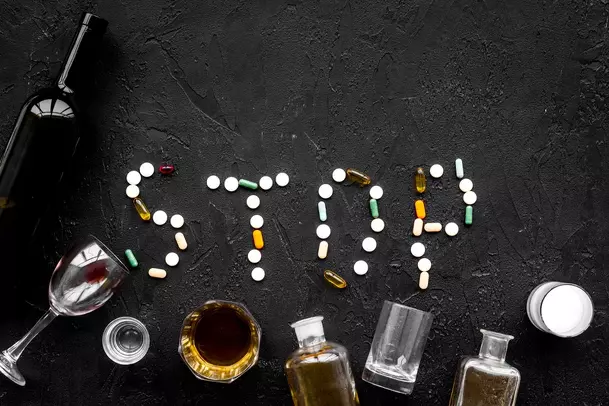
The model also addresses the emotional reactions of nonoffending parents and caregivers. This population is defined as individuals who were not involved in perpetrating the abuse, although they may also be experiencing PTSD symptoms related to the abuse. Adolescents who abuse substances or who are suicidal may temporarily see a worsening of symptoms with TF-CBT’s gradual exposure component.
Major treatment phases and components
Although studies that were conducted before publication of the most recent treatment manual used an earlier version of the manual, all the studies reviewed here adhered to the five key elements we have identified. Children and adolescents who have experienced these traumas may find TF-CBT an effective method in the process of returning to a healthy state of functioning. Trauma-focused cognitive behavioral therapy (TF-CBT) is an evidence-based treatment model designed to assist children, adolescents, and their families in overcoming the negative effects of a traumatic experience. The remaining three reviews we identified found that there was a high level of evidence for cognitive-behavioral approaches for traumatized children and adolescents, including TF-CBT (10,20,35).

How Trauma-Focused CBT Can Help Children Heal
- This treatment is short-term and generally lasts no more than 16 sessions, as more than 80% of traumatized children see improvement in this time.
- This review defined TF-CBT, differentiated it from other models, and assessed the evidence base.
- Children are shown how perceptions may be distorted and are given the tools to redesign those perceptions.
- If people cannot access TF-CBT where they are or would prefer to try something else, other types of therapy may help with trauma.
- The goal of the treatment is to help the patient develop a sense of safety and security, to repair or develop healthy social skills, and for the caregiver to feel more confident in their ability to help the child in a productive manner.
As we have noted, one study was conducted with girls from the Democratic Republic of Congo (11). In addition, one study was conducted with children in Norway (73% Norwegian, 10% Asian) (29). Overall, the RCTs in our review included strong fidelity procedures coupled with very similar definitions of the service. In addition, most assessment tools were well validated, including structured cbt interventions for substance abuse clinical interviews (for example, the Kiddie Schedule for Affective Disorders and Schizophrenia) and self- and parent-report measures (for example, the University of California, Los Angeles, PTSD Reaction Index). Databases surveyed were PubMed, PsycINFO, Applied Social Sciences Index and Abstracts, Sociological Abstracts, Social Services Abstracts, PILOTS, the ERIC, and the CINAHL.
Child-specific sessions
Finally, the review highlighted the limitations and areas that need additional research. This information will help payers and policy makers as well as families of children exposed to trauma make informed decisions about treatment. Our literature search yielded ten RCTs that evaluated TF-CBT with the five core components as defined, as well as a number of additional open trials and dismantling studies that clarified the evidence of its effectiveness.

By understanding the effects of trauma, you are better equipped to cope with it, find practical solutions, and seek support. TF-CBT adapts these principles specifically to trauma, which is an emotional and physical response to a shocking or dangerous event. When it is helpful, a person’s thoughts and behaviors help them effectively manage their feelings in a healthy way. When it is unhelpful, someone may not know how to manage their feelings, have distorted beliefs, or engage in harmful behaviors as a way of coping. The goal of the treatment is to help the patient develop a sense of safety and security, to repair or develop healthy social skills, and for the caregiver to feel more confident in their ability to help the child in a productive manner. Cognitive behavioral techniques are used to help modify distorted or unhelpful thinking and negative reactions and behaviors.
- Ratings were based on predefined benchmarks that considered the number and quality of the studies.
- Only two of the seven RCTs conducted by the developers of the treatment met AHRQ’s strict guidelines for inclusion regarding risk of bias (24,25).
- Although Cary and McMillen (10) specifically addressed TF-CBT, the other reviews drew their conclusions on the basis of cognitive-behavioral therapies in general, making it difficult to discern what the conclusions would have been had they focused on TF-CBT alone.
- Furthermore, although those authors excluded studies that did not measure PTSD symptoms, our review included two additional studies that assessed symptoms other than those of PTSD (24,30).
Group sessions
We evaluated TF-CBT for the treatment of a broad range of traumatic events, rather than focusing on a specific type of trauma, as was the case for two reviews published in 2013 by the Agency for Healthcare Research and Quality (AHRQ) (19,20). One of the AHRQ reviews provided a thorough comparative effectiveness study of cognitive-behavioral interventions for children and adolescents that address trauma other than maltreatment or family violence, but it did not cover the specific TF-CBT model defined here (19). The literature search for this AHRQ review merged individual and school group models (21,22) and included only one study of what was described as “cognitive-behavioral therapy” for trauma among children and adolescents (23). The authors reviewed two studies by TF-CBT developers that are covered here (24,25) but no others. This article reviews the literature on TF-CBT as part of the Assessing the Evidence Base Series (see box on next page).
A 2018 review looked at clinical trials to explore the benefit of TB-CBT and two other psychotherapies for treating adults with PTSD. This group of talk therapies stems from the idea that thoughts, emotions, and behavior all affect one another and that this interaction can be helpful or unhelpful. Our literature search resulted in 13 articles reporting on ten RCTs (11,13,14,24–26,28–34) and six review articles (10,12,18–20,35).
- Trauma-focused cognitive behavioral therapy (TF-CBT) is a type of psychotherapy for children who have experienced a traumatic event or series of traumatic events.
- Clearly, the implementation of this model as outlined depends on the presence of a competent, child-focused caregiver at the time of treatment, which cannot be presumed in all families affected by abuse and maltreatment.
- Nine RCTs were administered in the individual or conjoint format (13,14,24–26,28,29,31,33); and one, an intervention with Congolese girls, was administered in a group format (11).
- They chose from three levels of research evidence (high, moderate, and low) on the basis of benchmarks for number of studies and quality of their methodology.
Find a Therapist
Many other researchers have gone on to replicate these results, proving the efficacy of this model in treating children and adolescents who have experienced traumatic stress. Is an information sheet describing the key principles of trauma-focused cognitive behavioral therapy (TF-CBT). It outlines the differences between trauma and post-traumatic stress disorder (PTSD), and describes some of the key components of cognitive-behavioral therapy (CBT) for PTSD. It is a helpful handout to give to clients who may want information before choosing between evidence-based therapies such as trauma-focused CBT and EMDR. Cary and McMillen (10) reviewed ten RCTs published between 1990 and 2011 and concluded that the evidence for positive outcomes from cognitive-behavioral therapies for trauma (including TF-CBT) was consistently high.

TF-CBT is a skills-based model, and it requires the child and parent to practice its components in order to be optimally effective. The goal of TF-CBT is to allow both child and parent to continue to develop their skills and communication techniques in a healthy manner. Healthcare professionals tailor TF-CBT to children and adolescents, and most research on the subject focuses on this age group.

